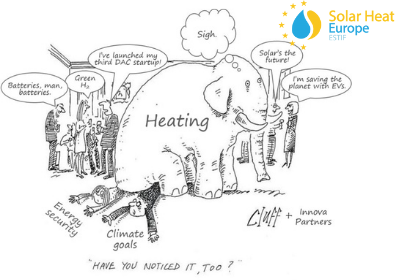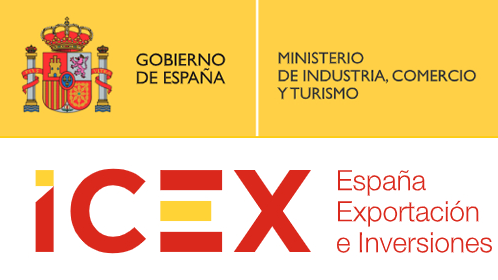The Future of Tourism is Sustainable
Spain is a favourite destination for tourists and has earned its place as a world leader in the tourism sector. In fact, tourism is an important source of income, if not the country’s source of income, as it is one of the pillars of the country’s economy contributing 11.7% of GDP and generates employment employing 12.2% of the total number of affiliates in Spain.
The COVID-19 crisis has hit the tourism sector hard, in particular the concept of mass tourism, and has forced us to rethink our concept of tourism and travel. The tourism sector has evolved from “mass, sun and beach tourism” to “green and quality” tourism, creating the new concept of green and sustainable tourism..
What is sustainable tourism and why is it so necessary?
The World Tourism Organisation (UNWTO), an international organisation linked to the United Nations since 1976, considers that one of the fundamental elements in developing tourism is to “make optimal use of environmental resources”. This requires maintaining essential ecological processes and helping to conserve biodiversity and natural resources. There are three keys set out by this organisation to make tourism sustainable:
- Optimise environmental resources. Without an ecosystem there is no tourism, which is why it is important to take care of the natural environment. Only by conserving natural resources and caring for biological diversity is tourism possible.
- The authenticity of the local culture. A fundamental factor in understanding a place is its people, the traditional values of the host community, its culture, architecture… Without respect for culture, tourism cannot be sustainable.
- Wealth distribution. The economy is another of the fundamental factors within tourism: to ensure economic activities that last over time and that there is a balance in the distribution of socio-economic benefits. One of its objectives is to generate stable employment opportunities, income and social services, and to reduce poverty in local communities.
History
However, the birth of sustainable tourism as such can be dated back to the 1990s, when the impact of tourism began to have socio-economic effects on society. Different organisations and institutions such as the Council of Europe and the United Nations Organisation issued recommendations for tourism that respects natural resources.
The main reasons why sustainable tourism has gained weight are due, for the most part, to the negative impact that unstructured and mass tourism has had over the years. The destruction of the environment or the seasonal nature of work are some of the impacts that sustainable tourism can mitigate.
Awareness of environmental issues and policies and the fact that consumers increasingly value the efforts made by companies in terms of corporate social responsibility and the efforts of institutions have also made it possible to make sustainable tourism a reality.
The strategy for sustainable tourism in Spain
As we have already mentioned, Spain is a leader in the tourism sector, with more than 82 million international tourists in 2018, and this simple figure demonstrates the fundamental importance of the sector in the country. However, to maintain this position, the country must be at the forefront and be a force for proposing a new, greener and higher quality tourism model. Aware of this need, the Spanish Government, through the Secretary of State for Tourism, has drawn up a Sustainable Tourism Strategy for Spain 2030.
This strategy lays the foundations for a new tourism development model.
This new model is based on 5 principles:
- Socio-economic growth, for which we must work towards the competitiveness and profitability of the sector, focusing on quality and accelerating the process of digital transformation.
- Preservation of natural and cultural values, on the basis that the conservation of our extensive cultural and natural heritage is a priority objective.
- Social benefit, to achieve a distribution of the benefits of the sector, and to face challenges such as the depopulation of rural areas in Spain.
- Participation and governance, structuring participatory governance mechanisms between the State and the competent administrations at all levels.
- Permanent adaptation, given that it is not only a question of seeking quality and improvement, but also of enabling the sector to be able to respond to the new environment of constant change.
- Leadership, which aims to consolidate Spain’s role as a world leader in the sector.
How to measure sustainable tourism?
“Measuring sustainable tourism is fundamental to improve policy action for sustainable development, and will promote a common statistical language that can be compared across countries and different economic sectors, and make the voice of tourism heard in addressing key decisions,” said UNWTO Secretary-General Zurab Pololikashvili during the 18th Meeting of the Committee on Statistics and Tourism Satellite Account at UNWTO.
The UNWTO defines a series of indicators aimed at helping managers of tourism businesses and destinations to make better decisions. At the same time, benchmarks are established in order to be able to establish comparisons that serve to establish improvements. The main benchmarks for the tourism sector are:
- Electricity and energy consumption in kilowatt hours (kWh) per square metre of space served.
- Fresh water consumption in litres or cubic metres (m3) per guest per night.
- Waste production (kg per guest per night and/or litres per guest per night).
These indices make sustainable tourism tangible and the actors involved can have a clear reference when it comes to approaching business.
In fact, within the hotel sector there is a real change to make their businesses more and more sustainable. The main difference between a sustainable hotel and a conventional one is the implementation of measures aimed at reducing the carbon footprint, electricity and water consumption, and the conservation of the ecosystem and its natural resources. For this reason, many hotels reflect these types of actions in their daily activities in order to conserve both flora and fauna and boost the local economy.
The key point of this model is to minimise the negative environmental impact as much as possible. The strategy should outline an order to avoid the loss of natural habitat, to protect endangered species and vulnerable environmental zones. To this end, we could stop excessive construction of roads in the natural environment or the creation of tourist facilities in protected areas such as coastal areas or beaches. But also hotels can think about buildings in a more sustainable way.
Indeed, hotels are high consumers of water and electricity, which has a considerable impact on the environment. This is where everything will work in favour of green tourism. Hotels must adapt to the new tourism model that is emerging and this adaptation involves rethinking their energy source. There are many eco-responsible energy solutions available today. However, for the hotel sector, the energy response must be twofold: electricity and heat. An answer provided by the hybrid innovation of solar panels with aHTech technology that produce electricity and heat while providing DHW and allowing savings to be made.
Share this article on your social networks
Subscribe our Newsletter!
External news
Featured Post
Recent Posts
Related Posts…
Write us, we will answer you as soon as possible.
Responsible for the data: Abora energy S.L.
Purpose: Sending emails with news and offers.
Legitimation: Your expressed consent.
Recipient: Subscribers’ list in Mailchimp.
Rights: Access, rectification, elimination, anonymity, portability and forgetting data.













